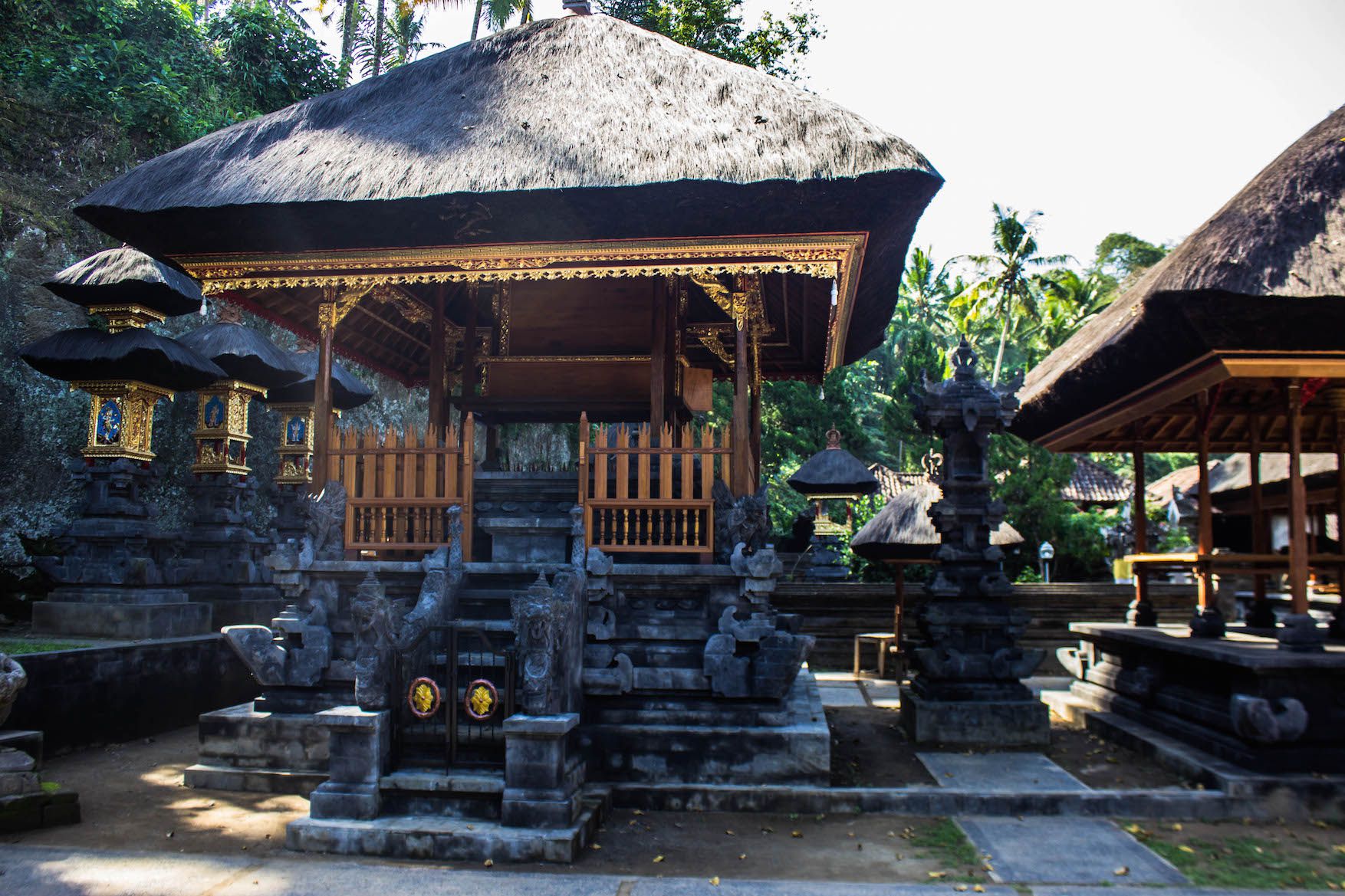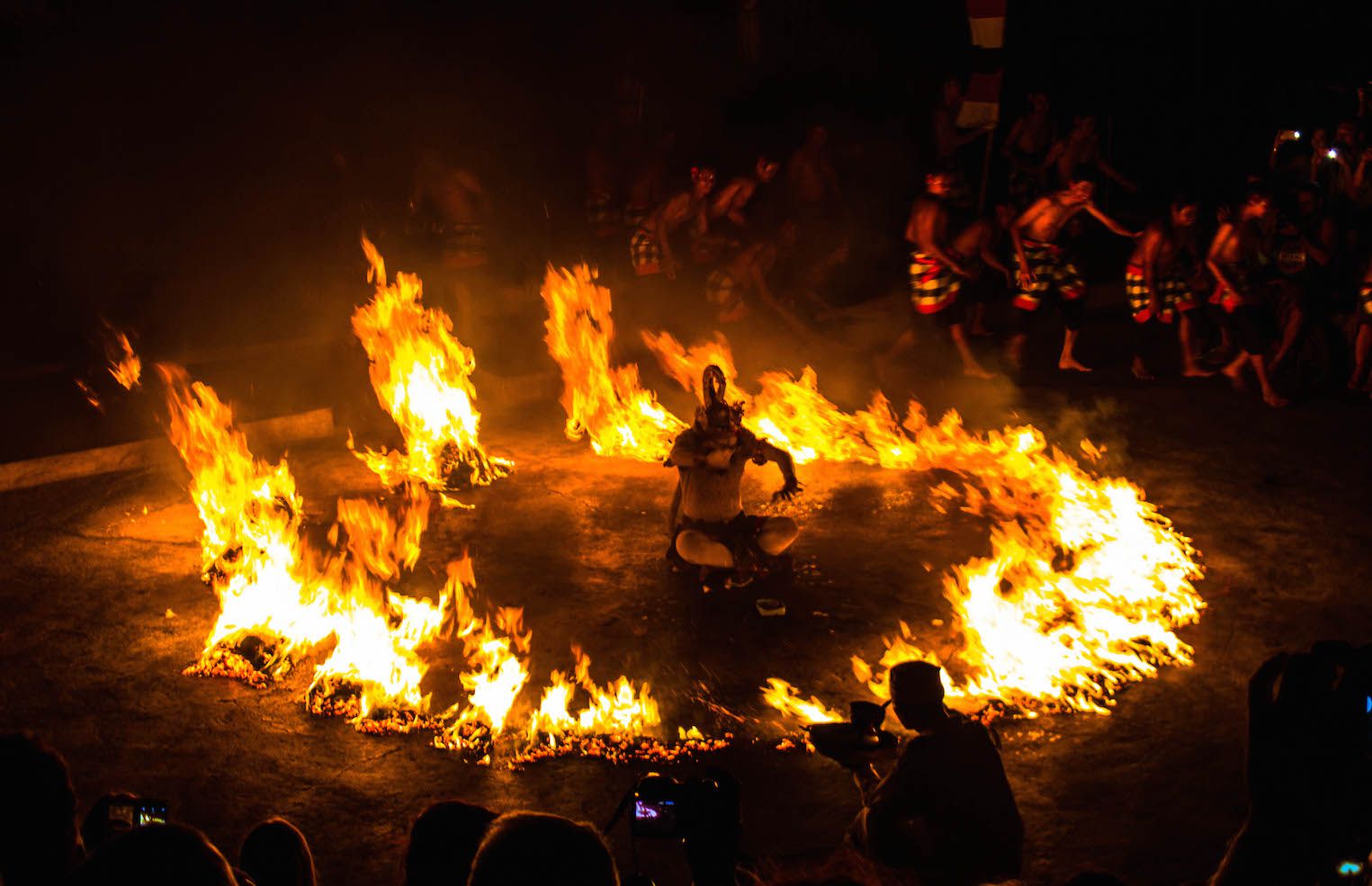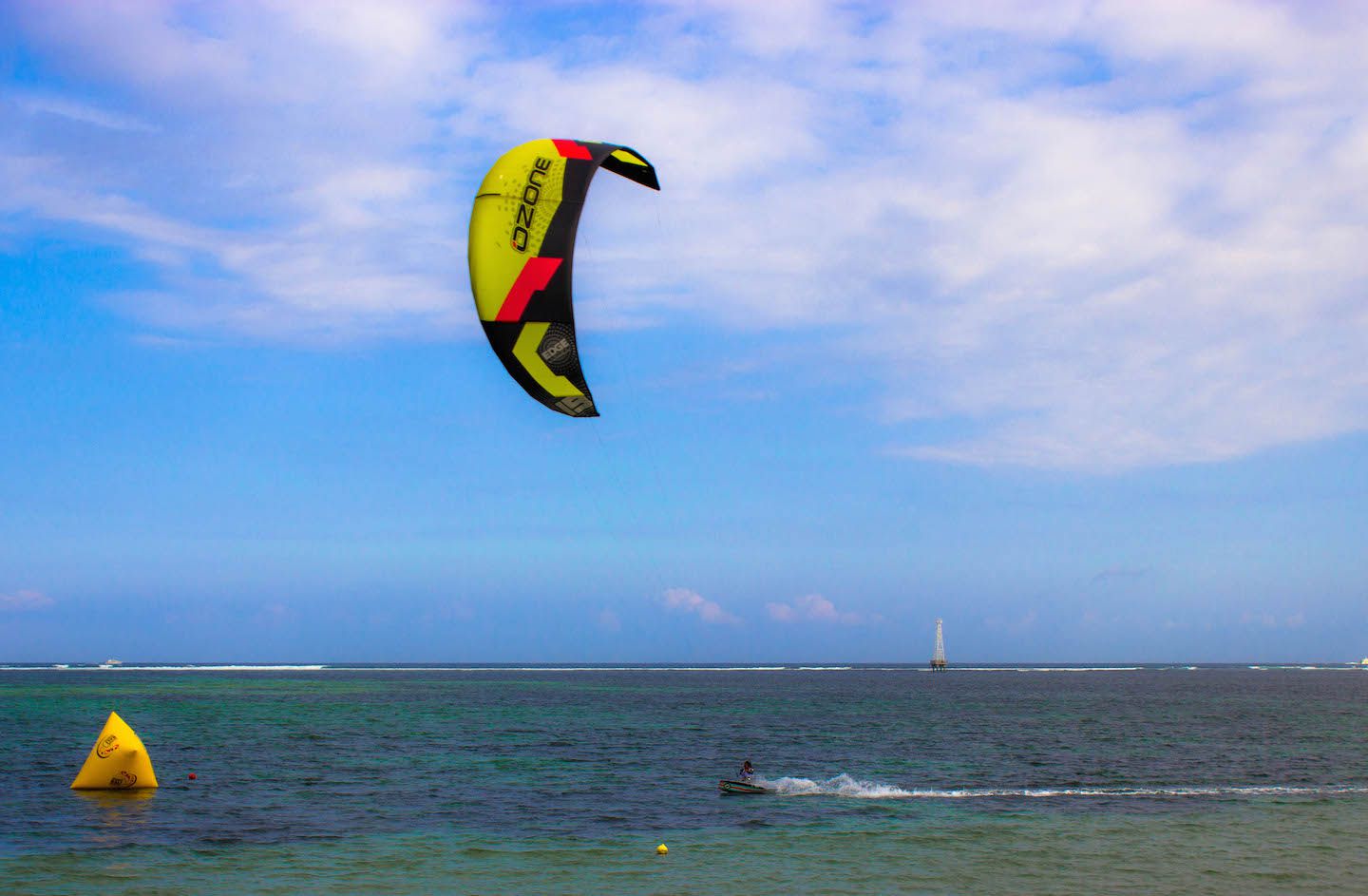Bali. The name echoes around the globe like no other. Hordes and hordes of tourists go crazy with just the thought of setting foot on the Island of the Gods. But what is it that makes Bali so special? Is it its unparalleled culture expressed in its friendly people and in the form of intricate temples? Perhaps it is its rugged coastline, sandy beaches, lush rice terraces or even the barren volcanic hillsides? A combination of any and all of those? The true appeal of Bali is certainly in the eyes of the beholder and we made sure to enjoy it in our own way.
Temples of Bali
Even though we’ve been suffering acute temple fatigue for a while now (we had a temporary bout of relief for Borobudur, thankfully), we still felt like we owed Bali a visit to its most famous temples. After all, it wouldn’t be the Islands of the Gods if we didn’t.
Taking the bus from the Gilimanuk port in western Bali to Denpasar our very first day on the island, I was astonished with the number of temples we passed by. I could /count/ almost one temple for every five houses on the main stretch of road. In fact, there is a government law that requires each village to build and maintain at least three temples: the pura puseh (temple of origin) located at the kaja (pure) side of the village, the pura desa (village temple) at the center of the village for everyday communal activities and the pura dalem (temple of the dead) at the kelod (unclean) side.

Many villages, however, well exceed this number and in addition, most families build their own sort of temple. With this great number of religious sites, it was obvious that the Hindu religion is engraved in Balinese culture and dictates the majority of daily activities and festivities. For example, the canang sari is one of the daily offerings to the supreme god of Indonesian Hinduism, Acintya. We checked out some of the most important temples and rituals.

The first temple visited was Goa Gajah, also known as Elephant Cave. The first thing we noticed when walking into Goa Gajah (which was repeated in the other temples as well), was its incredible harmony with nature. Everything seemed to fit perfectly – the walkways and stupas, the bathing pools, and even the taller shrines blended in with the lush green forest and the water flowing from the nearby river. It was as if the temple rose naturally out of its surroundings. Everything was open and aired. The whole atmosphere was thus incredibly soothing and peaceful.

From the main courtyard, water poured out into two square bathing pools, and we came face to face with the mouth of a demon leading the way into the cave. The intricate carvings on the rocks were a work of art in and of itself.

Inside the small T-shaped cave, we saw a few typical elements found in Hindu temples. In one of the sides were the remains of a linga, the phallic symbol of the Hindu god Shiva, and a yoni, its female counterpart. On the other side, the figure of Shiva’s son, the elephant-headed Lord Ganesh.
After leaving the cave, we took some time to sit and absorb all the peace we could from our surroundings before moving on to the next temple – Tanah Lot.

One of the most important and venerated sea temples in Bali, Tanah Lot had an interesting setup. While the approach to the temple was dominated by vendors and touts, breaking the harmony with nature I mentioned earlier, the first sighting of Tanah Lot was a truly exotic one. Lying on top of a rock that dips into the sea during low tide, Tanah Lot overlooked the vast Indian Ocean and becomes completely surrounded by it when the ocean levels defy gravity.

Even though the main shrine was off limits, we circled the temple and appreciated the view from every possible angle praying to Dewa Baruna, the sea god, to keep the tides low.

The last and perhaps most remarkable of the Balinese temples we visited was another of the seven sea temples, Uluwatu. Hanging from the top of a 70m cliff, the views from there were simply breathtaking. There, the land suddenly ends and falls abruptly, only to meet the fury of the ocean constantly pounding against it and extending to infinity. In the sky, the low setting sun added a glowing golden tint to the entire scenery.

The path along the cliff led to the temple and was not only beautiful, but also full of surprises – one being the monkeys inhabiting the surrounding forest.

Tourists are usually delighted to see these cute little primates, but one should be aware that their cuteness is only a disguise to put your guard down. Notorious thieves, the monkeys living here would steal anything that wasn’t carefully guarded, including sunglasses and even earrings! They had no qualms about approaching tourists and even climbing on them – only to reveal their true intentions. We were extra cautious with our belongings.

The highlight of our visit to Uluwatu was watching the performance of the Kecak dance. Originally a trance-inducing exorcism ritual, this iconic cultural performance was transformed and adapted as an entertainment dance show.

In the performance, at least 70 men wearing just a checkered cloth around the waist chanted the word “cak,” while moving their arms and hands. The show depicted a battle from the Ramayana (Hindu sanskrit poem), where the white monkey Varana helps prince Rama defeat the evil King Ravana, who after falling in love for Prince Rama’s beautiful wife, kidnapped her. Having the sea and the sunset view from the amphitheatre were added bonuses to the whole show.

My favourite part of the show was near the end, when the white monkey Varana was captured and almost set on fire by evil King Ravana’s followers. Fortunately, Varana breaks free and escapes the circle of fire surrounding him, putting an end to evil King Ravana plans and rescuing Prince Rama’s wife.

The temples of Bali showed us an important essence of island – the seamless integration and appreciation of religion and nature as one.

Beaches of Bali
Balinese beaches are far from what I would describe as an idyllic beach, especially after the ones we’ve been to in Thailand, the Maldives and the Philippines. The sand is far from white and the water far from pristine. In Kuta, tourists crowded the waves trying not to fall from their surfboards when showing off their newly acquired surfing skills. Needless to say, this is not the picture that comes to mind when thinking of an idyllic beach… at least not for our high standards these days.

For a more deserted beach escape, many head towards the far less crowded and much nicer looking Gilis in Lombok, which we tried for a few days. Consisting of three small islands a few meters off the coast of Lombok – Gili Trawangan, Gili Meno and Gili Air are the new “untouched” paradise in the area.

With beaches considerably better than Bali, we enjoyed our spot under the shade on the powdery white sands of Gili Trawangan. For three days, we lazed in the tropical island swimming (although the currents were incredibly strong!) and walking along the beach to watch the sunset. We also explored the other two Gilis on day trips and snorkeled in the house reefs. Unfortunately, we weren’t lucky and didn’t see any turtles like many others did, but we surely had a relaxing time on the island.
With our time in the Gilis over, we headed to Sanur beach on the east side of Bali. A quieter and more upscale version of Kuta, Sanur is famous for its good winds and thus a kitesurfing heaven. Having missed the wind in the Maldives and in Boracay in the Phillippines, I was extremely excited when the weather forecast predicted nearly perfect weather for kitesurfing.

It’s amazing the amount of freedom and adventure that this sport gives you – it combines the joy of surfing with the thrill of flying and I couldn’t wait to get back to gliding over the water again. For two consecutive days, I went to the beach and enjoyed a constant 14-knot wind that was more than enough to take me over the shallow reef of Sanur.

On the third day, the wind dropped and I had to wait for another two days (until our last full day in Indonesia) to get back on the board. The wind finally caught up and I had another good 2-hour session of kitesurfing, until it went to an almost standstill. Nonetheless, I really enjoyed kitesurfing in Bali and bonding over it with so many new kitesurfers all over the world.

On the last day as well, the Rip Curl School of Surf was also hosting a kitesurfing competition in five categories – course racing, freestyle, wave riding, slalom and speed racing. I managed to watch a bit of the freestyle category before the day ended. Unfortunately, the wind was pretty weak and kitesurfers weren’t going that high, but it was nice to see a few simple tricks nonetheless.

These last few days of kitesurfing and settling for a bit in Sanur marked the end of our stay in Bali and Indonesia. Besides the places we mentioned above in Bali, we also made some short trips to some rice paddies, to a luwak coffee farm and to Ubud. We ended up skipping the volcano trek, since we had just come from Mount Bromo and Mount Ijen. From our extended time in Bali, we felt like we really got a good feel of all the aspects of this island. While we would have been so much more impressed had Bali been one of our first destinations on this trip as opposed to one of the last, we still enjoyed it for what it’s worth. Given all the places we’ve been, Bali seemed overly touristy, but we did begin to understand why it strikes a cord with so many around the world.
For more pictures from Bali, please visit the gallery!
